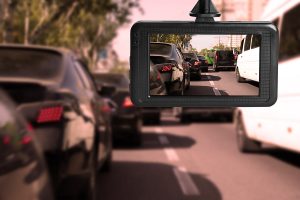The Key To Compensation Is Proving Liability
 Michael Babboni
Car Accidents
The law, in intent, is created to treat people fairly, punishing those who have done wrong and, where possible, compensating those who have been wronged. However, while that intent is admirable and simple, achieving that result can be long, complex, and drawn out. A personal injury lawsuit for injuries sustained in a car accident is one example.
Michael Babboni
Car Accidents
The law, in intent, is created to treat people fairly, punishing those who have done wrong and, where possible, compensating those who have been wronged. However, while that intent is admirable and simple, achieving that result can be long, complex, and drawn out. A personal injury lawsuit for injuries sustained in a car accident is one example.Conceptually, the problem seems easy enough to solve. If you are in a car accident and are severely—or even permanently—injured, requiring hospital treatment and time off work, this all costs money. If you are not at fault for the accident, it is unfair to expect you should cover the costs for something you’re not even responsible for. The onus of that financial burden should fall on the person actually responsible.
However, if the person responsible refuses to be held accountable, then a legally enforceable ruling from a personal injury lawsuit is what forces the responsible party to compensate you. The key here is asserting and then proving liability.
Defining Liability
In the simplest terms, liability, in the legal sense, means being held responsible in the eyes of the law, and thus answerable to what the law requires, and therefore obligated to fulfill the law’s expectations or expect more severe punishment. Liability means the court is, on record, declaring someone officially responsible and thus answerable for an incident.
As to be expected, for something that is going to go on legal record, this requires a lot of processes and, more importantly, little room for doubt. The American legal system is predicated on “innocent until proven guilty,” or, in the case of civil lawsuits, “not liable until proof indicates otherwise.”
So the goal of a lawsuit is twofold. The first and most important is to determine through investigation and evidence whether someone accused of legal liability is truly responsible for inciting an incident. The second goal is to determine the exact cost of that legal liability. In other words, what is fair compensation to someone that has been wronged?
Asserting Liability
Finding someone liable for an incident and thus responsible for financial compensation means the person being sued meets four specific legal criteria.
- They, as drivers, were expected to exercise reasonable care while driving.
- They did not exercise reasonable care, otherwise known as negligence.
- That negligence was the direct cause of an accident
- That accident resulted in an injury.
If all four of these requirements are met, it is comparatively easy for a jury or a judge to decide that someone is liable for causing an accident and personal injury and must financially compensate the accident victim.
However, the crucial aspect here is in proving negligence.
Point one that a driver is expected to exercise reasonable care is a given. There is no situation where a driver does not have to do this. Point four is also, in many cases, easy to prove. If a person could walk before a car accident and is now a wheelchair user with no use of legs due to amputation after the accident, it can safely be proven that the accident caused the injury.
Proving that the driver was negligent and that the negligence caused the accident is where the real legal challenge lies.
New Forms Of Proof
In the past, the only means of proof for establishing liability were traditional methods, like eyewitness accounts, or forensic investigation of an accident site, to see if the debris and evidence there matched the story being presented.
Today, however, in addition to eyewitness accounts or accident site investigations, there are other forms of proof, including:
Surveillance
It’s not unusual in dense urban areas for traffic intersections to be equipped with cameras to monitor activity and record drivers who ignore red light signals. However, these can sometimes be crucial evidence in an accident. When present, these provide an objective, though distant, accounting of what happened during an accident.
Dashboard Cameras
Another device that further crystallizes the events of an accident is dashboard cameras, or “dash cams,” which are small. These dashboard-mounted video cameras constantly record a car’s front and rear views. Since this is a “driver’s eye view” of the accident as it happens, it is difficult to dispute.
If you’ve been injured in a car accident and are not at fault, talk to an auto accident lawyer about your next move.
